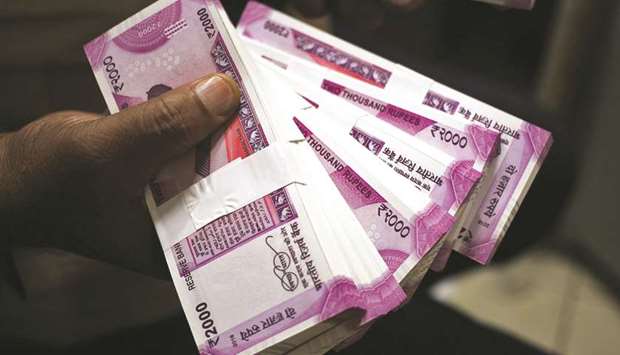The BSE Sensex closed higher by 145.14 points, or 0.40%, to 36,496.37, while the Nifty 50 rose 53.10 points, or 0.48%, to close at 11,010.20. The BSE MIdCap and SmallCap rose 0.73% and 0.41%, respectively. Among the sectoral indices on the BSE, IT, tech, telecom and healthcare rose over 1%. Basic materials, consumer discretionary goods and services, auto, metal and oil and gas declined. Sun Pharma, Infosys, Reliance Industries and Bajaj Finance were among the top gainers, whereas Bajaj Auto, Vedanta, BPCL and IOC were among the top losers.
Foreign investors sold shares to the tune of Rs 315.69 crore on Thursday, local investors bought shares worth a net of Rs 470.02 crore, provisional data showed.
Meanwhile the rupee yesterday recovered from its all-time low as state-run banks sold dollars, reported Bloomberg, citing two Mumbai-based traders. The rupee closed at 68.85, up 0.29% from its previous close of 69.05. It opened at 68.97.
“Price action suggests that the RBI intervened via state banks and that has helped the rupee recover”, the Bloomberg report added.
Asian currencies also reversed earlier declines triggered by China weakening the yuan’s daily fixing by the most in more than two years. The shift came after a sudden paring in the yuan’s drop, which spurred speculation of some type of intervention by Peoples Bank of China.
The currency touched a fresh record low of 69.13 a dollar after China weakened the fixing yuan by the most since June 2016, just a day after cutting it beyond the 6.7 per dollar level, which was previously thought to be a key threshold. PBoC weakens yuan fixing by 0.9% to 6.7671 per dollar, weaker than average estimate of 6.7654.
“Risk sentiments had tentatively stabilised in past few days, but two-pronged problems has resurfaced - the US Fed’s confidence on the US growth has provided a fresh tailwind to US dollar, weakening emerging market currencies. Concurrently, a weaker yuan fixing and the offshore counterpart signalling further depreciating pressure, is also spilling over to the AXJ FX universe. These factors have put the brakes on rupee’s recent rally” said Radhika Rao economist at DBS Bank.
The rupee was already under pressure due to continued surge in the crude oil which has raised concerns of quickening inflation. Outflows by foreign investors from local equities and bond market also dampened the sentiment.
“Fragile global risk sentiments and increasing domestic vulnerabilities have continued to weigh on INR in CY2018 after a stellar performance in CY2017.
The unrelenting capital outflow from EMs is a reflection of the increasing global risks as DM monetary policies normalise and trade war threatens to derail the global economic recovery.



